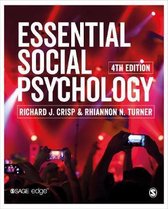Aggression: a verbal or physical act intended to cause harm to people or property
Theories of Aggression
Evolutionary Approach
Social behaviour has evolved and is passed down each generation to ensure survival of an
individual's genes - aggression has been passed down to ensure survival, such as through acquisition
of resources/safety, as well as securing social and economic advantage.
2 Limitations:
Difficult to provide evidence due to being developed over thousands of years
We are not only aggressive in order to protect ourselves, e.g., violence towards own family -
full explanation requires contribution from other perspectives
Cathartic Approach
Psychodynamic theory suggests that people hold two innate instincts: for life 'Eros' and for death
'Thanatos' - death instinct leads to self-destructive behaviour, i.e. aggression
Highly influential theory in early 20th century - aggression is a result of a build-up of
tension/frustration which needs to be released to restore balance
May be released onto a different target if aggression cannot be directed to the source - known as
the frustration-aggression hypothesis
Social Approach
The social context in which we exist also explain aggressive behaviour - social psychologists do not
deny evolutionary or cathartic contributors
Cognitive Neoassociationalist Model (Berkowitz, 1969, 1989):
Takes into account environmental cues - frustration generates anger, increasing chances of
aggressive behaviour, but only if there are appropriate cues in the environment - can be a
person or object previously linked with anger
Berkowitz & LePage (1967): male college students given electric shocks by confederate as
part of a task, more shocks reporting more anger - participants then gave shocks to
confederate on same task, in either a cue condition (presence of gun) or control condition
(nothing)
Cue had no effect on participants who were not angry
Angry participants gave more shocks in presence of weapons compares to control - led to
the phenomenon of the weapon effect.
Excitation-Transfer Model (Zillman, 1984):
Physiological reactions to different situations may be similar (heart-rate during aggression or
excitement) are differentiated by giving them labels depending on the external cues in a
given context - we may flirt when we label reaction as arousal, or behave aggressive when
we label it as anger
, Arousal in one situation can carry over into another, called residual arousal - example of
football fans misattributing anger and aggression due to high levels of excitement and
tension, thus causing potential aggression
Learning Theories of Aggression:
Operant Reinforcement: positive reinforcement may increase the likelihood of aggressive
behaviour
Social Learning Theory: Bandura proposed that behaviour can be learned through the
observation of others known as modelling. The more positive the perceived outcome of the
observed behaviour, the more likely it will be emulated - violent videos games have been
suggested to increase aggressive behaviour in children (Vargas, 2006).
However, SLT can have the opposite effect - observing non-aggressive behaviour should
reduce aggression
Criticisms: Does not take into account individual differences, such as genetic and
neuropsychological factors - Also contradicting evidence showing that watching violent TV
can reduce violent tendencies, acting as a release.
Person-Centred Determinants of Aggression
Gender Differences
Men are more likely to engage in physical aggression, but both men and women are roughly
equally likely to be verbally aggressive
Hormonal differences can explain this, but also due to gender socialization in boys and girls:
girls are encouraged to be more passive and therefore may rely on more indirect forms to fit
with expectations of family/society
Personality
Various personality traits, such as irritability, rumination and emotional susceptibility are
consistent traits associated with aggression - also a link with low agreeableness and
aggression
Friedman distinguished between type A and type B personalities: Type As are typically
ambitious who are in a rush to achieve their goals and compete with others. Type Bs are
relaxed, uncompetitive and creative - in a study, participants with type A personalities
administered larger electric shocks if their sense of competence had been threatened during
a task (Carver & Glass, 1978).
Link between self-esteem and aggression - some argue that low self-esteem links to
aggression, however there is little evidence to support this. Some psychologists are that high
self-esteem causes more aggression, due to them being more confident in the outcomes of
their behaviour, as well as regarding themselves superior
Berkowitz (1978) studied assaults convicts found that the assaults were mostly due to the
offender feeling insulted or belittles in some way, wounding their pride.
Alcohol






